September 29
2017 September 29
Reminder: Please send images as attachments in .jpg format.
Jochen Moehr has set us a puzzling problem with the moth below, from Metchosin. Compare it with his similar moth on September 18. We are dealing with two similar species (if they are indeed separate species!), Tetracis pallulata and Tetracis jubararia. Libby Avis writes that Jochen’s September 18 moth is Tetracis pallulata, whereas today’s moth is probably Tetracis jubararia, and Jeremy Tatum agrees.

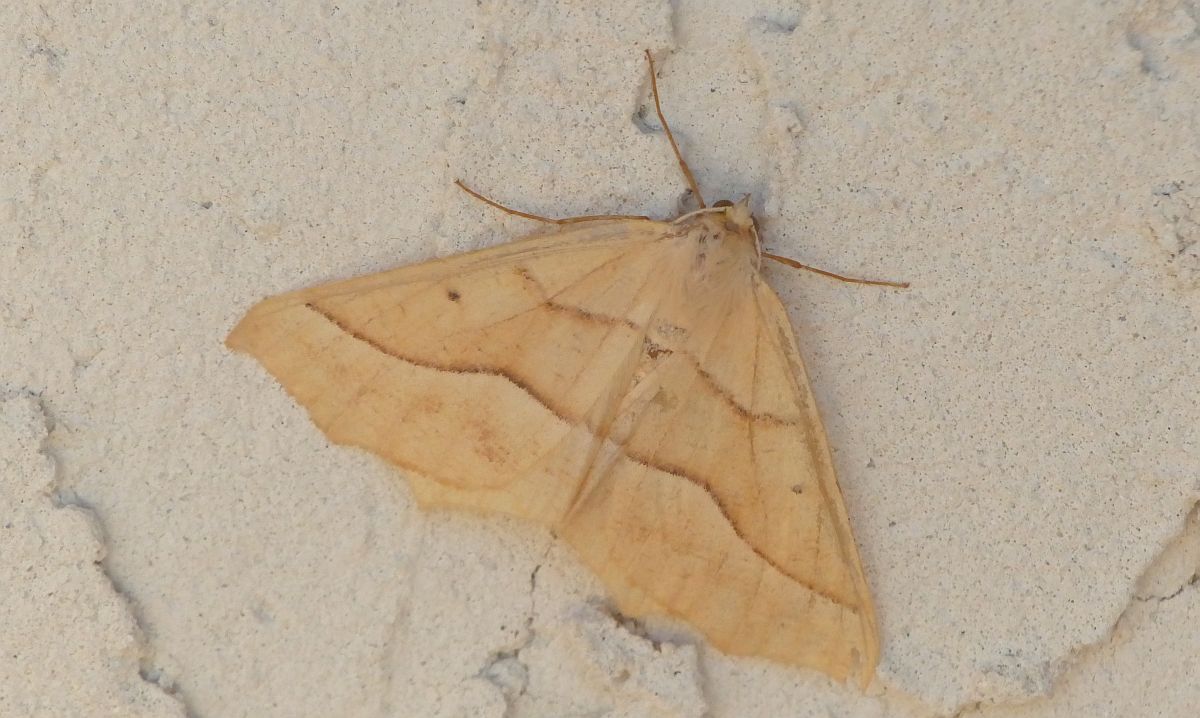
Probably Tetracis jubararia (Lep.: Geometridae) Jochen Moehr September 29

Jochen sends a photograph of a noctuid moth, which Libby has kindly identified for us as Fishea discors.

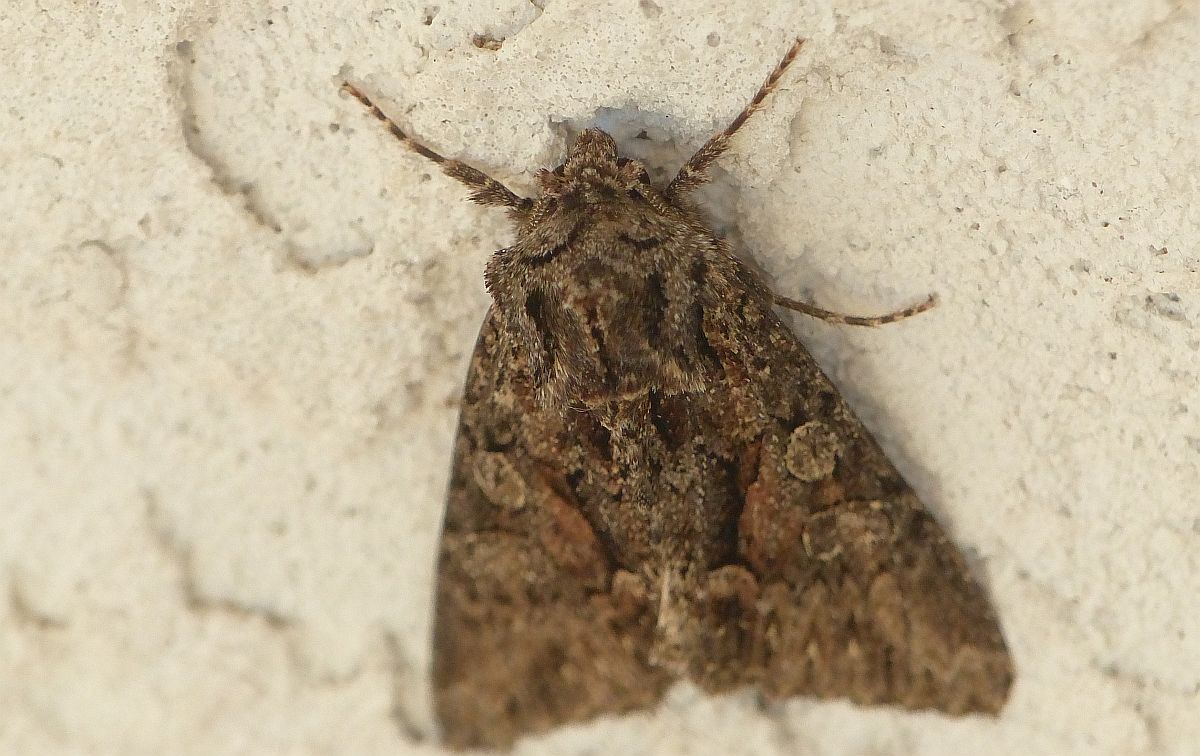
Fishea discors (Lep.: Noctuidae) Jochen Moehr
Val George sends photographs of upperside and underside views of a fresh American Lady at McIntyre Reservoir yesterday afternoon, Sept 28.
Notice that the largest of the white patches near the apex is pointed – it is blunt in our other two ladies. This patch can be white or orange – which can be useful in distinguishing between individuals. For example, it is orange in Mike McGrenere’s September 16 photograph, confirming that there is, or has been, more than one individual at McIntyre reservoir. The freshness of Val’s specimen is also an indication that there is more than one individual – other observers have reported seeing slightly worn specimens.
John Acorn, in his book on British Columbia butterflies, implies that this species, at one time called Hunter’s Butterfly, is somehow connected with hunters and hunting. Its scientific name at one time was Vanessa huntera. I haven’t been able to find the origin of this name, but I suspect that it was more likely named after someone whose name was Hunter, and it has no particular connection with hunting.

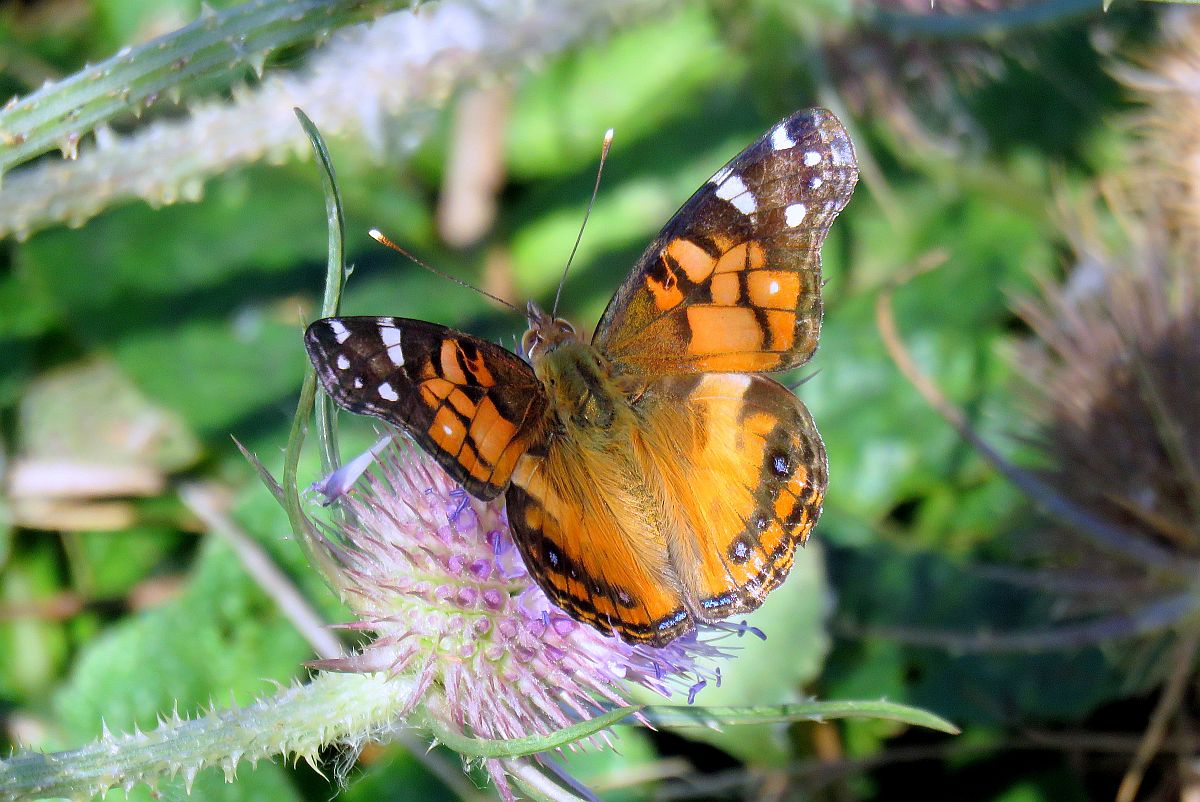
American Lady Vanessa virginiensis (Lep.: Nymphalidae) Val George

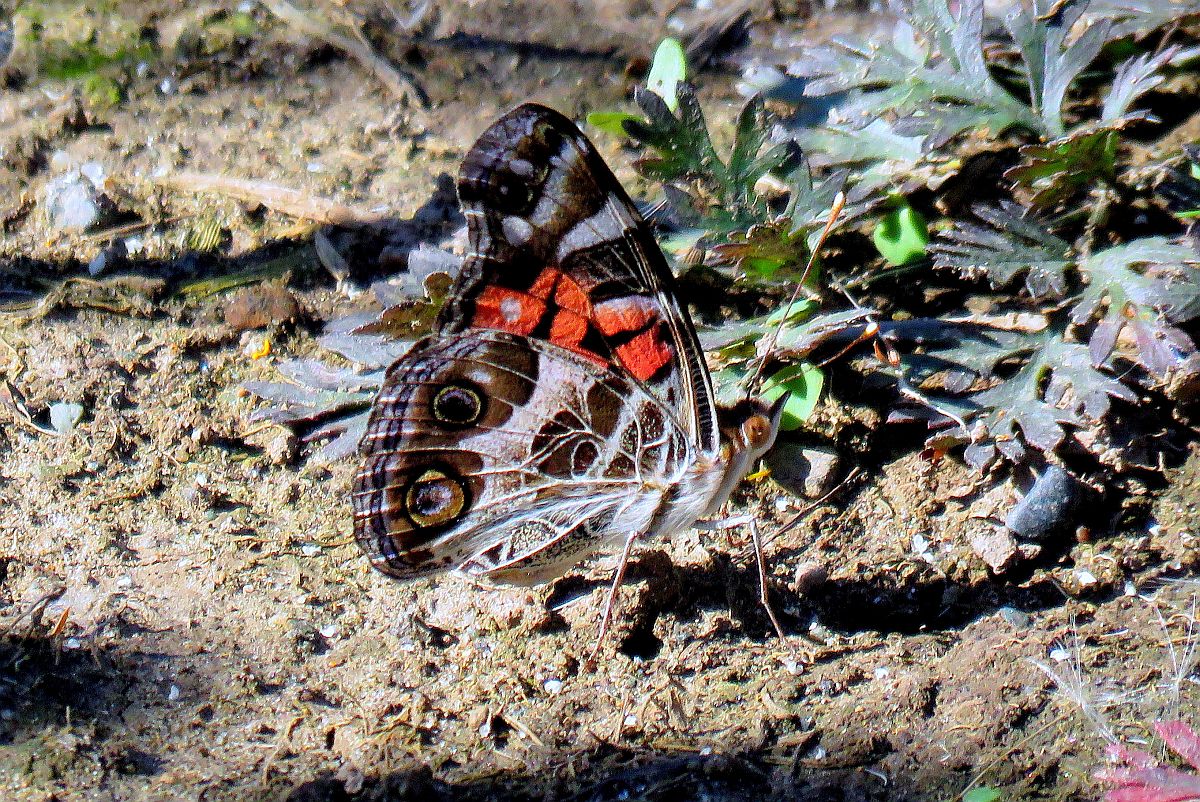
American Lady Vanessa virginiensis (Lep.: Nymphalidae) Val George
Shortly after I wrote the above, we received two photographs from Mark Wynja of an American Lady at McIntyre reservoir. While its patch is white, like Val’s, it is clearly a more worn specimen than Val’s pristine one, and so I think we can be sure that Mike’s, Mark’s and Val’s photographs are all of distinct individuals.

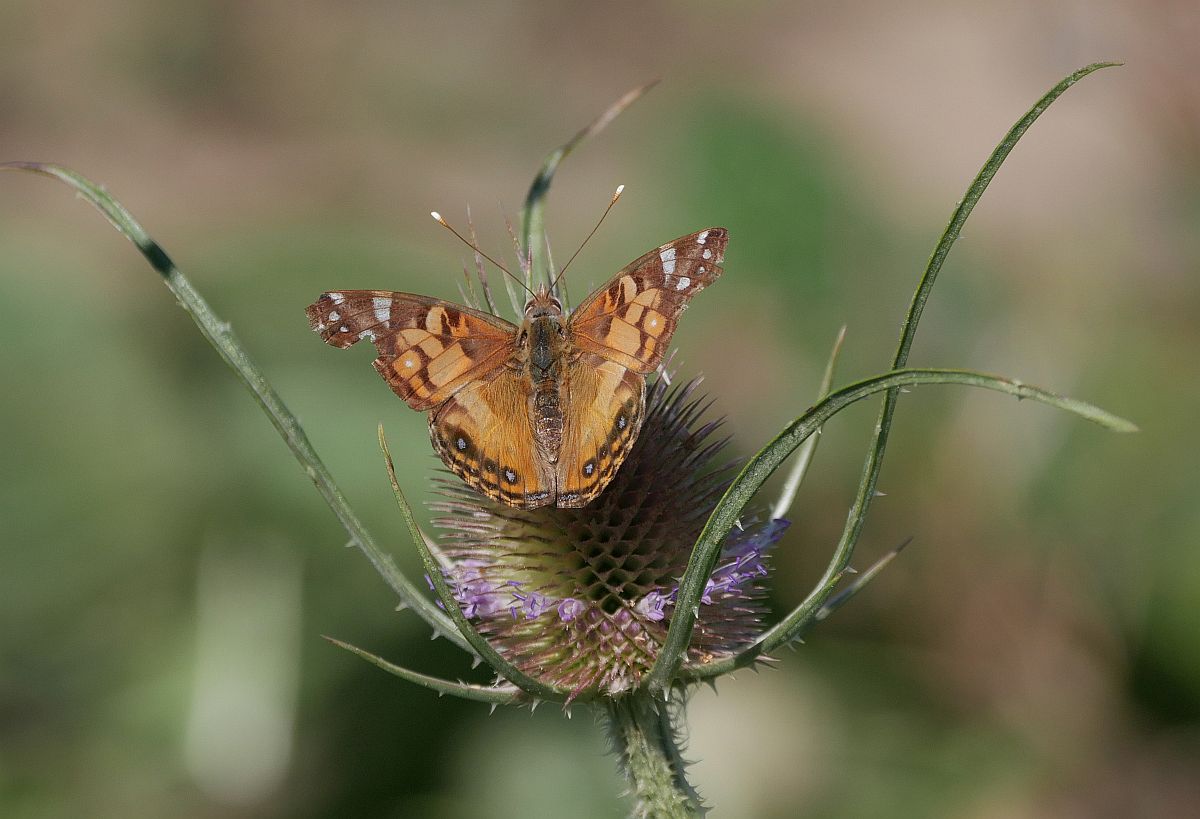
American Lady Vanessa virginiensis (Lep.: Nymphalidae) Mark Wynja

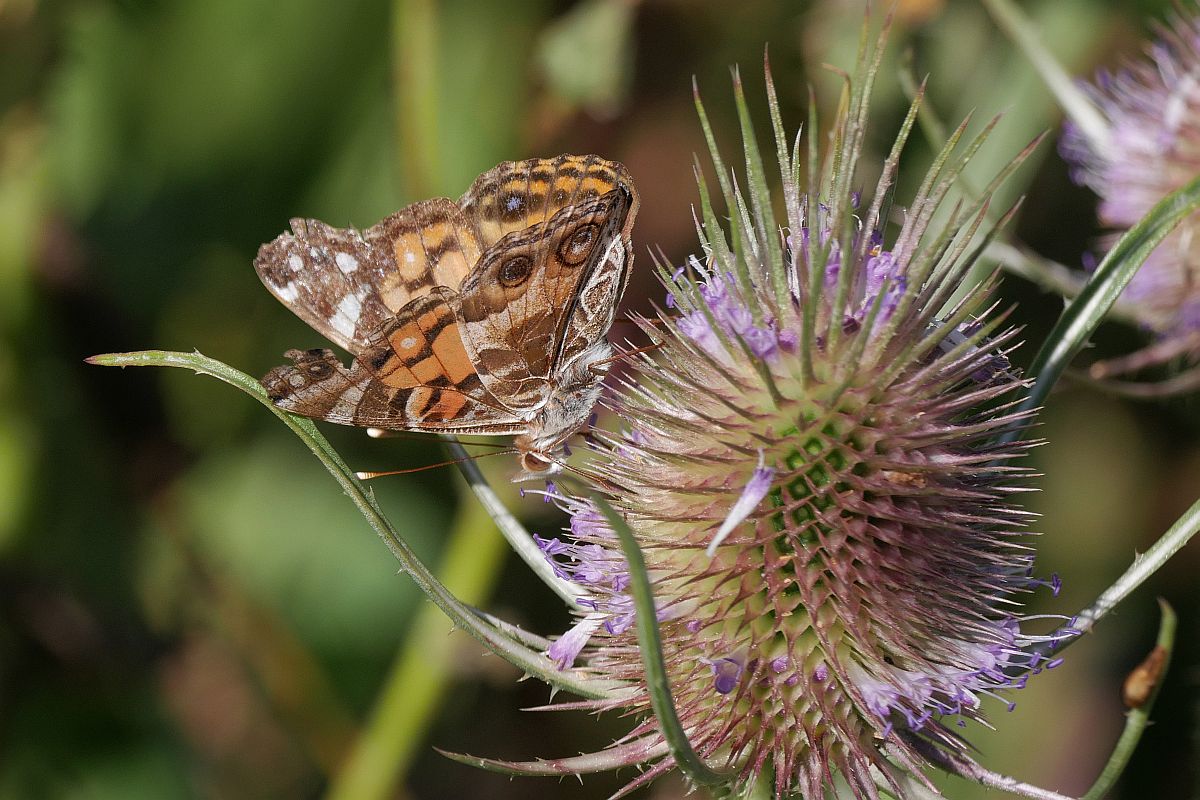
American Lady Vanessa virginiensis (Lep.: Nymphalidae) Mark Wynja
By the way, Jeremy writes, I have heard all sorts of (completely wrong!) names applied to these prickly flowers that are so attractive to butterflies at McIntyre reservoir. The plant is Teasel Dipsacus fullonum. It is not a thistle.
Mark tells us that Guy Monty took a photo of an American Lady on Little Mountain in Errington, near Parksville, on the same day, September 27.
Mike and Barb McGrenere write: In case you are interested [Yes, I am – always! Jeremy], we visited Mount Washington today and saw about three Green Commas (we believe) at Paradise Meadows.
Jeremy responds: Commas are difficult, particularly at Mount Washington, where several species may be expected, but I agree that these are Green Commas. If anyone feels that we may be mistaken, please let us know.

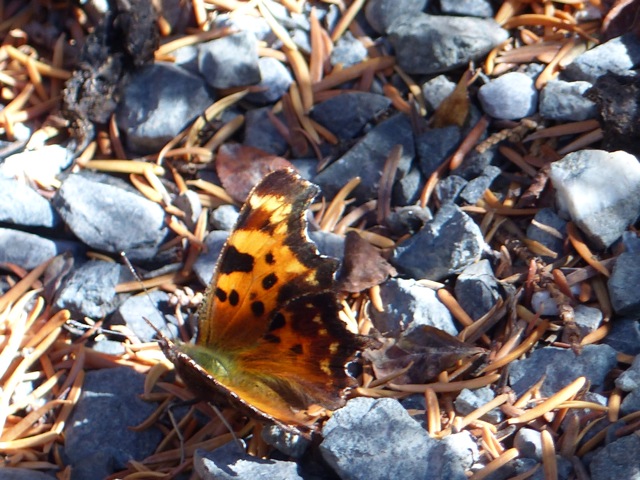
Green Comma Polygonia faunus (Lep.: Nymphalidae) Mike McGrenere

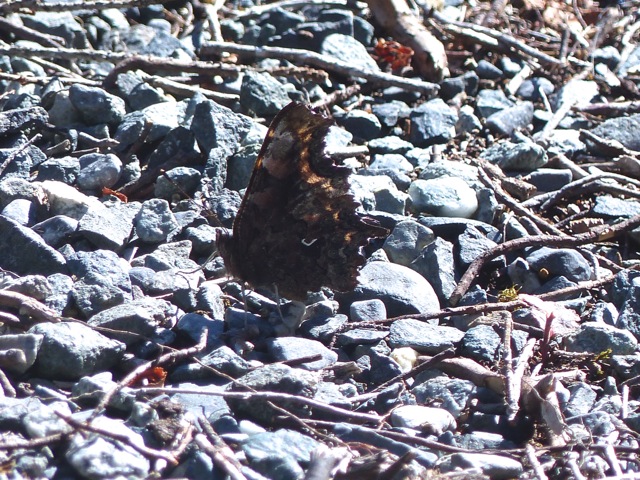
Green Comma Polygonia faunus (Lep.: Nymphalidae) Mike McGrenere
Jeremy Tatum writes: Here is another Ni Moth reared from a caterpillar found in the Brussels sprouts fields next to McIntyre reservoir. This one was photographed in natural daylight, and the colour rendering is better than the one shown yesterday.

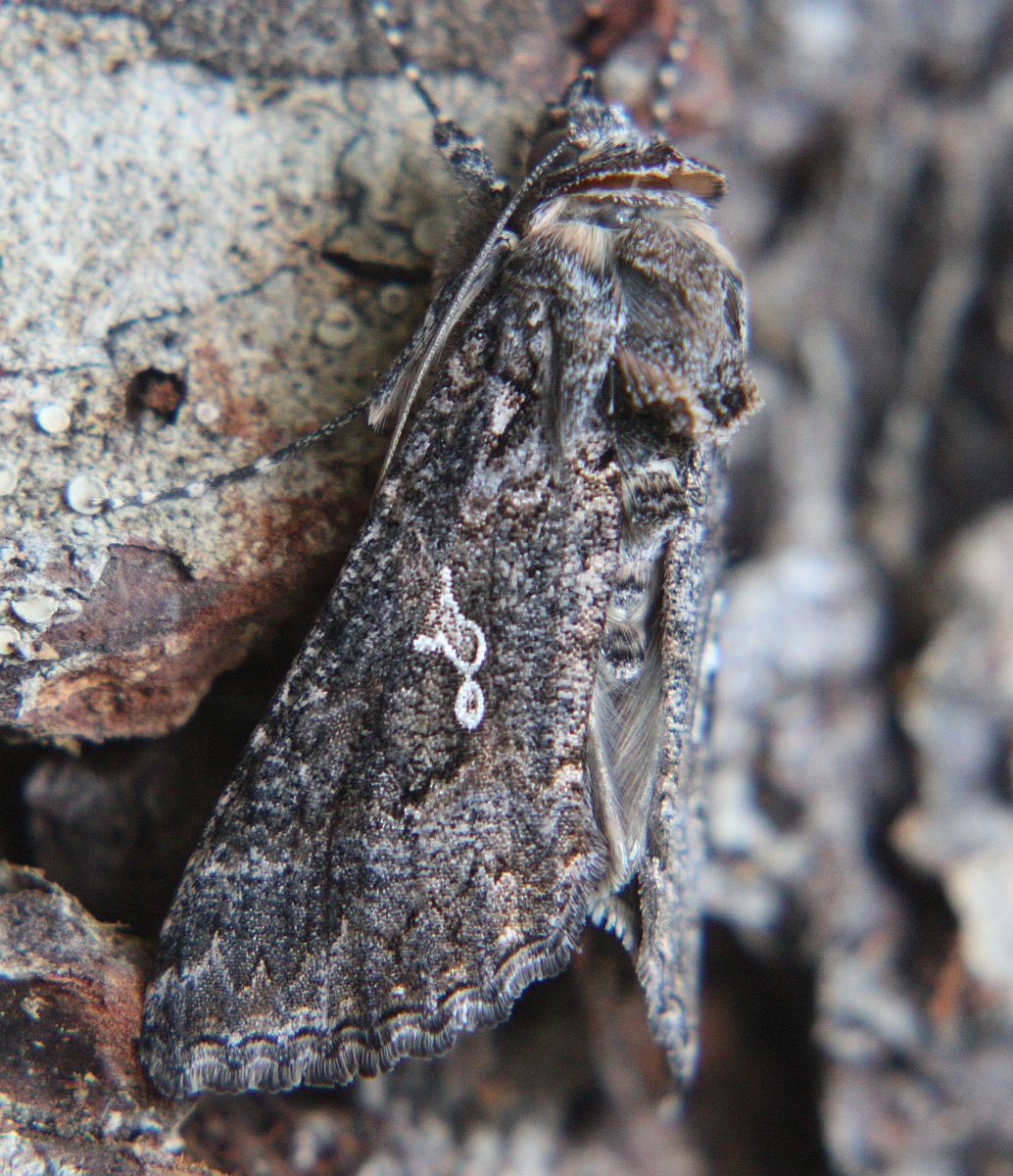
Ni Moth Trichoplusia ni (Lep.: Noctuidae – Plusiinae) Jeremy Tatum
